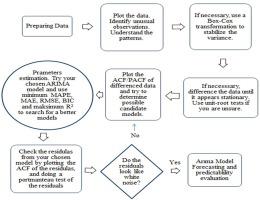International Immunopharmacology ( IF 4.8 ) Pub Date : 2021-09-09 , DOI: 10.1016/j.intimp.2021.108127 Mehmet Tahir Huyut 1 , Zübeyir Huyut 2

|
Background
Early detection of oxidant-antioxidant levels and special care in severe patients are important in combating the COVID-19 epidemic. However, this process is costly and time consuming. Therefore, there is a need for faster, reliable and economical methods.
Methods
In this study, antioxidant/oxidant levels of patients were estimated by Expert-models using biomarkers, which are effective in the diagnosis/prognosis of COVID-19 disease. For this purpose, Expert-models were trained and created between the white-blood-cell-count (WBC), lymphocyte-count (LYM), C-reactive-protein (CRP), D-dimer, ferritin values of 35 patients with COVID-19 and antioxidant/oxidant parameter values of the same patients. Error criteria and R2 ratio were taken into account for the performance of the models. The validity of the all models was checked by the Box-Jenkis-method.
Results
Antioxidant/Oxidant levels were estimated with 95% confidence-coefficient using the values of WBC, LYM, CRP, D-dimer, ferritin of different 500 patients diagnosed with COVID-19 with the trained models. The error rate of all models was low and the coefficients of determination were sufficient. In the first data set, there was no significant difference between measured antioxidant/oxidant levels and predicted antioxidant/oxidant levels. This result showed that the models are accurate and reliable. In determining antioxidant/oxidant levels, LYM and ferritin biomarkers had the most effect on models, while WBC and CRP biomarkers had the least effect. The antioxidant/oxidant parameter estimated with the highest accuracy was Native-Thiol divided by Total-Thiol.
Conclusions
The results showed that the antioxidant/oxidant levels of infected patients can be estimated accurately and reliably with LYM, ferritin, D-dimer, WBC, CRP biomarkers in the COVID-19 outbreak.
中文翻译:

使用带有用于 COVID-19 诊断/预后的生物标志物的专家模型预测 COVID-19 患者的氧化/抗氧化水平
背景
早期检测氧化-抗氧化水平和重症患者的特殊护理对于抗击 COVID-19 流行病很重要。然而,这个过程既昂贵又费时。因此,需要更快、更可靠和更经济的方法。
方法
在这项研究中,专家模型使用生物标志物估计了患者的抗氧化剂/氧化剂水平,这对 COVID-19 疾病的诊断/预后很有效。为此,在 35 名患有白血病的患者的白细胞计数 (WBC)、淋巴细胞计数 (LYM)、C 反应蛋白 (CRP)、D-二聚体、铁蛋白值之间训练和创建专家模型同一患者的 COVID-19 和抗氧化/氧化参数值。模型的性能考虑了误差标准和 R 2比率。通过 Box-Jenkis 方法检查所有模型的有效性。
结果
使用经过训练的模型,使用 500 名诊断为 COVID-19 的不同患者的 WBC、LYM、CRP、D-二聚体和铁蛋白的值,以 95% 的置信系数估计抗氧化剂/氧化剂水平。所有模型的错误率都很低,决定系数足够。在第一个数据集中,测量的抗氧化剂/氧化剂水平与预测的抗氧化剂/氧化剂水平之间没有显着差异。这一结果表明模型是准确和可靠的。在确定抗氧化剂/氧化剂水平时,LYM 和铁蛋白生物标志物对模型的影响最大,而 WBC 和 CRP 生物标志物的影响最小。以最高精度估计的抗氧化剂/氧化剂参数是天然硫醇除以总硫醇。
结论
结果表明,在 COVID-19 爆发中,可以使用 LYM、铁蛋白、D-二聚体、WBC、CRP 生物标志物准确可靠地估计感染患者的抗氧化剂/氧化剂水平。











































 京公网安备 11010802027423号
京公网安备 11010802027423号